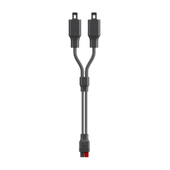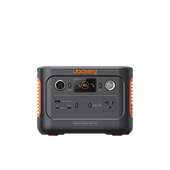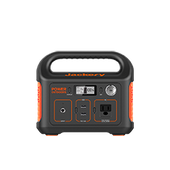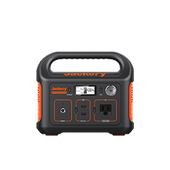The average electric bill for studio apartments in the United States starts from $86 and goes up to $240, depending on where you live and your average electricity consumption. For instance, if you live in Utah, where the current electricity rate is 11.50 ¢/kWh and has an average consumption of 783 kWh, you will pay roughly $86 against your monthly electricity bill.
However, if your studio apartment is in Texas, where the electricity rate in June 2024 is 14.47 ¢/kWh, and your monthly consumption is 1178 kWh, then you will pay $170.45 per month. Suppose you also live in a studio apartment in the United States and are looking for ways to reduce your reliance on an on-grid power supply. In that case, you can check out Jackery Solar Generators, which can help you power 99% of your essential appliances.
Key Takeaways
By understanding the average electric bill for studio apartments and its parameters, one can find ways to reduce it. In this comprehensive guide, we will discuss several important points, including:
- Important facts and figures about the average electric bill for studio apartments.
- The average electricity bill for different houses is based on bedroom sizes.
- Important facts that affect the average electric bill for an apartment.
- Effective tips and tricks to lower the electric bill in a studio apartment.
- Important factors influencing the average utilities cost in a studio apartment.
- And how Jackery Solar Generators can help you reduce your electric bill in studio apartments.
What Is The Average Electric Bill for Studio Apartments?
The average electric bill for studio apartments ranges from $86 to $240. That said, when analyzing the average electric bill for a studio apartment, various factors, like electricity rates, usage patterns, location, and electricity provider, should always be considered.
The variation in the average electric bill for a studio apartment is influenced by the apartment's size, the number and efficiency of appliances, local electric rates, and the chosen energy provider. Nationally, the average electricity consumption for residential homes is approximately 899 kWh per month, with an average electric rate of 16.41 ¢/kWh. This results in a national average electricity bill of about $147.52.
Studio apartments, typically smaller and more energy-efficient than larger homes or commercial buildings, generally consume less electricity as there are fewer appliances and residents. Therefore, while the average bill for a studio apartment falls within the range mentioned earlier, individual consumption patterns and local rate variations may cause significant differences.

Average Electric Bill for Different Sizes of Apartments
In order to understand the average electric bill for different sizes of apartments, let us consider a few points that would help us in the calculations and analysis. For instance, let us consider that the national average electric rate is 16.41 ¢/kWh in June 2024. If you want to check the current electricity rate in your area, you can refer to the EIA's site to gain insights.
Now, the size of an apartment significantly influences its average electric bill due to varying energy consumption needs. Most studio apartments in the United States are 600 square feet and typically consume between 300 and 500 kWh monthly.
With the national average electric rate of 16.41 ¢/kWh, the monthly electric bill for a studio apartment usually ranges from $50 to $83. However, depending on location and monthly consumption, this average can increase to as much as $240 or sometimes $300 per month.
The average monthly electricity consumption for a one-bedroom apartment of approximately 750 square feet is between 500 and 750 kWh. Considering the national average rate, this comes to an electric bill ranging from $83 to $125.
Similarly, a 2-bedroom apartment of 1,000 square feet uses between 650-875 kWh per month, which results in an average monthly bill between $108 and $146. If you consider large apartments, like a 3-bedroom unit with 1250 square feet of carpet area, then it may consume 800 - 1100 kWh monthly. Here, the electric bill will range from $133 to $183. For apartments that exceed the monthly consumption of 1,100 kWh, the electricity bill may go up to $200.
|
Average Electric Bill |
|
|
Studio Apartment (300 - 500 kWh) |
$50 - $83 |
|
1-Bedroom Apartment (500 - 750 kWh) |
$83 - $125 |
|
2-Bedroom Apartment (650 - 875 kWh) |
$108 - $146 |
|
3-Bedroom Apartment (800 - 1100 kWh) |
$133 - $183 |
|
Large Apartments (more than 1100 kWh) |
$200 |
Average Electric Bill for Different States of Apartments
The average electric bill for a studio apartment in the United States varies significantly based on location. For example, residents in New York living in a studio apartment will pay a higher price for their electricity bill than Utah residents. Similarly, the residents in a studio apartment in Hawaii will pay a higher bill compared to the national average.
According to the EIA, the average residential electric bill in the United States is $147.52 monthly. This estimate is based on an average consumption of 899 kWh and an electric rate of 16.41 ¢/kWh. Different cities and states have different electricity bills based on their location, electricity rates, and providers.
For instance, the average monthly consumption in Oklahoma is around 1,155 kWh with an average electric rate of 12.37 ¢/kWh. This means that the average electric bill in Oklahoma is $142.87. Similarly, residents of a 2-bedroom apartment In Virginia pay an average electric bill of $166.26 per month. This is assumed by considering the residential electric rate of 15.31 ¢/kWh and a monthly consumption of 1,086 kWh.
Minnesota has an electric rate of 16.38 ¢/kWh. But with a lower consumption range of 600 to 1,000 kWh, the residents here see their average bills ranging from $98.28 to $163.80.
Meanwhile, despite having a high electric rate of 24.51 ¢/kWh, the residents in New York have a lower electricity bill of $145.09 due to a lower average consumption of 592 kWh. In contrast to New York and other neighboring states, Connecticut residents face one of the highest average electric bills at $186.16 per month, which is driven by a high electric rate of 26.00 ¢/kWh and an average consumption of 716 kWh.
|
State |
Average Electric Bill (June 2024) |
|
Oklahoma |
$142.87 |
|
Virginia |
$166.26 |
|
Minnesota |
$98.28 to $163.80 |
|
New York |
$145.09 |
|
Connecticut |
$186.16 |
As you can see from the above table and its data, the average electric bill for studio apartments in the United States varies per location, electric rates, and other influencing factors.
What Factors Affect The Average Electric Bill of A Studio Apartment?
Several factors influence the average electric bill of a studio apartment. Each contributes to the overall cost of electricity, and when one understands these factors, one can make well-informed decisions and even manage their energy usage more effectively.
Location
The geographic location of the apartment plays a significant role in determining the electric rates of a studio apartment or even a large building. According to the data sourced from EIA, states like Connecticut, New York, and Hawaii have higher rates, which leads to higher bills. Conversely, states like Oklahoma have lower rates (12.37 ¢/kWh), which helps the residents pay low electricity bills.
Weather
Several states in the US have varied climatic conditions. For instance, the residents of North Dakota face extreme cold weather, whereas the residents of Texas experience extreme heat waves. Weather conditions significantly affect energy consumption. In colder climates, residents often use electric heating systems, which can dramatically increase consumption.
Similarly, air conditioner use increases in warmer regions. For instance, an air conditioner can use around 3,500 watts, increasing electricity usage significantly during hot months.
Apartment Size
In most cities, studio apartments are generally smaller and use less electricity than larger apartments. The specific layout and insulation of the apartment can directly impact heating and cooling efficiency, which also influences the monthly average electricity bills.
Appliances and Electronics
The type and number of appliances significantly influence electricity usage. For instance, if your studio apartment has a refrigerator that consumes 300W, a washing machine of 500W, and a microwave oven that consumes 600W, then your electricity bill would be higher than the one with only a portable fan and a couple of LED lights. Additionally, electronic devices such as televisions, computers, and gaming consoles add to the overall consumption.
Electric Rates
As mentioned in the above table, the rate per kilowatt-hour (kWh) charged by the local utility company is crucial. Different states have different rates based on their regulatory policies, infrastructure costs, distribution costs, and more. For example, a state with a higher rate per kWh will naturally result in higher bills, even with lower consumption.
Energy Efficiency
The energy efficiency of the apartment and its appliances also affects the bill and overall cost of living in a studio apartment. For instance, Energy Star-rated appliances consume less power than old models or those that require immediate maintenance.
Appliances With Considerable Usage
In apartments of varied sizes there are several appliances and HVAC systems that are typically the most significant contributors to electricity usage. Some of the most prominent ones are:
Heating and Cooling Systems
HVAC systems are usually the largest energy consumers in any household or commercial building. For instance, central air conditioners use around 3,500 watts, while electric heaters that most residents use during the winter can use between 1,500 and 2,500 watts.
Water Heaters
If the studio apartment is in a location that experiences extreme cold, the use of electric water increases. Depending on the model and usage, a typical electric water heater typically uses between 3,000 and 4,500 watts.
Kitchen Appliances
Every household appliance directly or indirectly influences electricity bills. Most studio apartments have refrigerators, microwaves, ovens, dishwashers, and vacuum cleaners, which are major energy consumers.
Lighting
Depending on the type of bulbs used, lighting can also contribute significantly. If you are still using incandescent bulbs that use about 60 watts, whereas energy-efficient LED bulbs use around 10 watts for the same light output.
Entertainment and Electronics
Most studio apartments have televisions, gaming consoles, and computers that can collectively add a notable amount to the monthly electric bill. For instance, a modern gaming console uses around 200 watts when operational, and a desktop computer uses around 150-300 watts.

How to Lower The Electric BIll for A Studio Apartment?
If you live in such a state or city where there is a high electricity rate from the provider then considering different ways to lower the electric bill for your studio apartment will ultimately help you lower the overall utility costs. As you can analyze from different factors, when we talk about lowering the electric bill, we consider different combinations of energy-efficient habits, appliance upgrades, and potentially investing in alternative energy sources.
Here are some practical tips to help reduce your monthly electricity costs for your studio apartments:
Switch to Energy-Efficient Appliances
If you are still using old appliances that consume extra power, it is high time to consider upgrading to energy-efficient appliances that can significantly reduce your electric bill.
For example, if you use an old refrigerator that uses around 300 kWh annually, then with the average electric rate of 16.41 ¢/kWh, this refrigerator usage will add around $49.23 to your annual bill. But if you go ahead with an Energy Star model that uses 150 kWh, you will save approximately $25 annually. Similarly, energy-efficient washing machines, dishwashers, and microwaves will directly help you reduce the average electric bill in studio apartments.
Adjust Your Thermostat
For a studio apartment of any size, get programmable or smart thermostats. During the summer, try to set your thermostat to a higher temperature when you're not at home and lower it during the winter, which leads to substantial savings. The latest smart thermostats can automate these adjustments right from your mobile phone, which leads to optimizing energy usage based on your schedule and availability. It is observed that each degree of temperature adjustment with the help of a programmable thermostat can save up to 2-3% on your heating and cooling costs.
Use Energy-Efficient Lighting
Experts recommend replacing incandescent bulbs with LED bulbs, which use about 10 watts to provide the same amount of light as a 60-watt incandescent bulb. These LED lights use less power and have a longer lifespan, which helps reduce energy and replacement costs.
Unplug Unused Electronics
There are several electric appliances at a studio apartment that consume power even when they are turned off. In electrical terms, this phenomenon is known as phantom load. So, when you are not using certain appliances, like chargers, TVs, and computers, unplugging them from the power socket is recommended to reduce wasted energy.
Alternatively, you can also buy power strips that can make it easier to switch off multiple devices at once.
Invest in Solar Energy
Installing solar panels can greatly reduce or even eliminate your electricity bill over time. Even though the initial investment can be substantial, you will eventually find that the long-term savings and potential tax credits can make it worthwhile. A small solar setup producing 1 kW of power per hour can generate about 4 kWh daily, offsetting a significant portion of a studio apartment's energy use, especially in sunny regions.
The solar panel installation costs an average of $15000 to $23000. The overall price will vary depending on the size of your studio apartment and the location.
Suppose you do not wish to spend a lump sum against the solar system installation. In that case, you can always check out Jackery Solar Generators, which helps you charge 99% of your studio apartment appliances, like air conditioner, water heater, induction cooktop, entertainment system, and more. The use of Jackery Solar Generators will further help you reduce your utility costs and help you save money against electricity bills.
Jackery Solar Generators for Lowering Your Electric Bills
Jackery is the global leader in manufacturing high-quality and efficient solar generators, solar panels, and portable power stations. The Jackery Portable Power Stations feature safe LiFePO4 or NMC batteries to charge most household appliances in the studio apartment. The power stations can be recharged with the Jackery SolarSaga Solar Panels, wall outlets, or car chargers.
If you want to lower the average electric bill for a studio apartment, you can charge heavy-duty appliances with the help of Jackery Solar Generators, especially during peak electricity hours. This way, the solar generators can help you reduce the energy consumption obtained from the utility grid and switch to clean energy. Here are three Jackery Solar Generators that are ideal for lowering electricity bills:
Jackery Solar Generator 3000 Pro
If you want to offset the high electricity cost or wish to prepare for long-term power outages, the Jackery Solar Generator 3000 Pro sounds like an ideal option. It has a large battery capacity that supports 99% of household appliances, such as refrigerators, microwaves, kettles, coffee makers, and ACs. With the help of the Jackery Manual Transfer Switch, you can create a whole-home backup solution and power appliances from any outlet.
Appliance Running Time
- Refrigerator (500W) = 5.1H
- TV (150W) = 17.1H
- Coffee Maker (900W) = 2.8H
- Light (10W) = 257.0H
- AC (1000W) = 2.5H
- Microwave (950W) = 2.7H

Customer Review
"The 3000 Pro will be our backup power for the home fridge and chest freezer. We have already tested it: 3 days of power for the fridge and 5+ days for the freezer. We plugged in our radiant heater for a test—1.5 hrs and done. I am set for the next power outage." — J D.
Jackery Solar Generator 2000 Plus
The Jackery Solar Generator 2000 Plus is an expandable charging solution suitable for versatile scenarios, including home backup, overlanding, off-grid living, etc. It supports 99% of small and heavy-duty appliances such as air conditioners, space heaters, TVs, lamps, etc. With the help of additional Jackery Battery Pack 2000 Plus, the battery capacity can be extended from 2kWh to 24kWh.
Appliance Running Time
- Refrigerator (500W) = 3.4H
- TV (150W) = 11.5H
- Coffee Maker (900W) = 1.9H
- Light (10W) = 173.6H
- AC (1000W) = 1.7H
- Microwave (950W) = 1.8H

Customer Review
“Living in the Florida Keys, we have to prepare for hurricanes. Irma put us without electricity for 10 days. Once I gave the equipment a try out for 48 hours, we were very happy and felt good about comfortably living through the next bad hurricane." — Steven Holmes.
Jackery Solar Generator 2000 Plus Kit (4kWh)
If you want a powerful charging solution that lowers the average electricity bill in a studio apartment to a large extent, the Jackery Solar Generator 2000 Plus Kit (4kWh) is a reliable option. It can power heavy-duty appliances during off-grid living or extended blackouts to reduce reliance on the electricity grid and save money. If you want more power, you can consider adding the Jackery Battery Pack 2000 Plus to extend capacity up to 24kWh.
Appliance Running Time
- Refrigerator (500W) = 6.9H
- TV (150W) = 23.1H
- Coffee Maker (900W) = 3.8H
- Light (10W) = 347.2H
- AC (1000W) = 3.4H
- Microwave (950W) = 3.6H

Customer Review
"The Jackery Explorer 2000 Plus and Battery Pack with the 400W solar panels package is a great combination for home backup and RV usage. The 120VAC and RV receptacles and the others are great to have on the unit." — Larry Gee.
What Is The Average Utilities Cost in A Studio Apartment
Utilities in most studio apartments in the United States typically include electricity, water, gas, Internet, trash disposal services, and sometimes cable TV. The total cost of these utilities can vary significantly based on location, climate, and individual usage patterns.
Here's a breakdown of the typical utilities and their average costs in different states and cities in the US:
Electricity Charges
As discussed earlier, the average electricity bill for a studio apartment can range from $86 to $240 per month. The national average is around $147.52, but this varies widely depending on local rates and consumption patterns. For instance, the average electric bill in Oklahoma is about $142.87, while New York's is approximately $145.09.
Water Charges
The cost of water can also vary as per the location, utility provider, and usage. For instance, the average monthly water bill in Philadelphia for a typical residential customer is $74.81, including sewer usage charges.
For senior citizens, the monthly water bill is lower, at $45.12. Similarly, water and trash services in a typical New York apartment costs $40 per month. Other cities might have different rates, but the average water bill in the United States generally ranges from $20 to $60 per month.
Gas Charges
Similarly to electricity and water charges, gas charges also depend on consumption and rates. For instance, the gas charges in Philadelphia range from $80 to $96 per month for using 64 thousand cubic feet (Mcf) of natural gas per year.
The charges include a supply charge based on usage and a delivery charge for maintaining the gas distribution system. But the monthly gas charge in New York is roughly around $100. Similarly, Minnesota's average natural gas charge is around $80 - 100 per month.
Internet Charges
The cost of the Internet varies widely based on the provider and the speed of the service. On average, the monthly cost of the Internet is around $70 - $100. However, different cities and states have more affordable options for their users.
The internet and cable charges in Minnesota are roughly around $60, whereas the high-speed Internet in Las Vegas ranges from $60 - $100 per month.

Average Gas Bill for an Apartment
In most households, natural gas is primarily used for heating, cooking, and water heating. Similarly to the electricity bill, the average gas bill for studio apartments in the United States varies significantly depending on location, usage patterns, and the time of year.
Here are some examples of average gas bills in different regions:
- Las Vegas:Natural gas is mainly used for water heating and cooking in Las Vegas, and the average monthly cost is around $40.
- Minnesota:Due to extremely cold temperatures, natural gas is essential for heating in most studio apartments, which adds $80 - $100 to the overall cost of living.
- Oklahoma:Natural gas is also used for heating and cooking in Oklahoma, and its costs vary from $50 to $100 per month.
- New York:New Yorkers see a spike in their gas usage and charges during the winter months. Most residents pay an average monthly bill of around $100.
- Philadelphia:The average monthly gas bill in Philadelphia ranges from $80 to $96, based on a usage of 64 thousand cubic feet (MCF) per year.
Tips for Lowering the Gas Bill in an Apartment
If you plan to manage your living costs in a studio apartment, it is highly recommended to lower unnecessary costs. Here are a few handy tips for lowering your gas bill:
- Always set your apartment's thermostat to lower temperatures when you are not at home to reduce usage.
- Always ensure that the doors and windows of your studio apartment are properly sealed.
- If it fits your budget and schedule, try servicing your furnace or boiler that can improve its efficiency.
- In order to save on heating costs, set your water heater to a lower temperature, such as 120°F (49°C)
- If it matches your budget, invest in energy-efficient appliances and fixtures.
Average Water Bill For An Apartment
The average water bill for studio apartments in the United States also varies based on location, usage habits, and whether water charges are included in the rent. Here are some examples of average water bills in different regions that will give you a generic idea about this utility's cost and how much it overall affects the monthly expenditure:
- Philadelphia:In Philadelphia, the monthly water bill is around $74, which also includes $17 charges for sewer usage. Different utility providers also offer a discounted rate for senior citizens, who can pay $45 for their water charges.
- Las Vegas:The water charges are mostly included in your studio apartment's monthly rent. However, if billed separately, they would typically cost around $32 monthly.
- Minnesota:Similarly to Las Vegas, water and sewer are often included in housing costs, but separately it averages around $70 per month.
- Oklahoma:The residents of Oklahoma typically pay from $30 to $50 per month against their water and sewer bill.
- New York City:The water charges in a studio apartment in New York cost about $20 per month. However, in most of the cities and buildings, you will find that the cost of water is included in the apartment rent.
Tips for Lowering the Water Bill in an Apartment
Check out the following easy-to-follow tips that will help you lower the water bill in your studio apartment:
- Repairing dripping faucets and running toilets to avoid wasting unnecessary water.
- Replace standard faucets with low-flow alternatives to reduce water consumption.
- Try choosing water-efficient dishwashers and washing machines that will also help lower electricity costs.
- Avoid leaving the water running while brushing your teeth, shaving, or washing dishes.
- Run dishwashers and washing machines only when you have full loads.
Average Internet Bill for An Apartment
The Internet is another major utility adding to the monthly living cost in different studio apartments. Similarly to all the major utilities for an apartment, the cost of internet services also varies based on location, service provider, and the specific plan chosen.
Here are some examples of average internet bills in different regions:
- New York City:the Internet plans in New York fluctuate depending on the provider and the data plan. That said, a monthly internet plan with a speed of 60 Mbps or higher costs roughly $70.21.
- Oklahoma:In most of the places in Oklahoma, residents pay between $60 and $120 per month for Internet and cable TV packages. The charge depends on the provider and the data plan selected by the residents.
- Minnesota:Similarly to Oklahoma, the cost of high-speed Internet and basic cable TV in Minnesota ranges from $60 to $100 per month.
- Las Vegas:High-speed internet (broadband connection or fiber connection) and cable TV generally cost between $60 and $100 per month.
- Philadelphia:The average cost of internet service is around $86 per month. However, a few internet service providers offer an affordable plan at $25 per month.
Tips for Lowering the Internet Bill in an Apartment
Here are a few tips and tricks that you can follow to cut down on your monthly internet charges:
- Always compare different plans offered by service providers to find the most affordable one that suits your needs.
- You can also get in touch with your current provider and negotiate for a lower rate or ask about promotional offers.
- Consider bundling the Internet with other services like cable TV or phone, as bundled options often offer reduced rates.
- Assess your actual internet usage and choose a plan that fits your needs.
- You can even purchase your modem and router to cut the cost of renting the same from the service provider.
Other Utilities Bills for an Apartment
In addition to electricity, water, and Internet, studio apartment residents in the United States often have to account for several other utility bills, including cable TV, parking, garbage, and recycling services. Some of the most prominent rates from different regions are:
- In New York City, garbage disposal costs about $20 per month. Most utility providers add recycling services at the same fee.
- Garbage disposal services in Las Vegas start at $10 and go up to $30 per month.
- Some apartments may require residents to pay Homeowners Association (HOA) fees, which typically range from $100 to $500 per month.
- A resident of the Oklahoma region pays roughly $20 to $50 per month for a reserved parking spot.
- Some studio apartments also offer storage units for an extra monthly fee, which typically ranges from $20 to $100.

Studio Apartment Electric Bill FAQs
What size of solar generator do I need for my studio apartment?
The size of the solar generator that's ideal for your studio apartment will directly depend on the wattage of the appliances you want to charge simultaneously and for how long you want to power them. Let's assume you want to charge a refrigerator (500W), lights (10W), TV (150W), and portable fan (50W) simultaneously with the Jackery Solar Generator 3000 Pro. The running time can be easily calculated with the following formula:
Working Hours = Battery Capacity in Wh × 0.85 ÷ Operating Wattage of the Appliances = 3024Wh × 0.85 ÷ 710W = 3.6H.
Note: 0.85 is the power loss that happens when charging the appliances.
What costs the most electricity in an apartment?
The heavy-duty heating and cooling appliances in the studio apartment consume the most electricity, followed by the water heater.
How much power does a small apartment use?
An average small apartment of 750 square feet consumes around 750kWh per month. However, if the square footage increases, the power consumption also increases. For example, the electricity usage of a 1000-square-foot apartment is around 880kWh.
What is the average electric bill for a 2-bedroom apartment in PA?
The average electric bill for a 2-bedroom apartment in Pennsylvania is $110 - $115. However, it may vary depending on the household's power consumption and the current electricity rate in PA.
How much electricity does the average person use per month?
The average US person consumes around 899kWh of electricity per month, but this might vary from 700 to 2000kWh depending on property size and power consumption.
Conclusion
Whether you live in a studio apartment or a 4-bedroom apartment, it is essential to find ways to lower the monthly electricity bills. If you're worried about the high average electric bill for a studio apartment, you may consider investing in solar power systems. The Jackery Solar Generators are powerful, portable, and robust charging solutions that can supply steady electricity to most household appliances. They can help you shift the reliance from the electricity grid to solar generators and save money on high bills.





















































































































Leave a comment